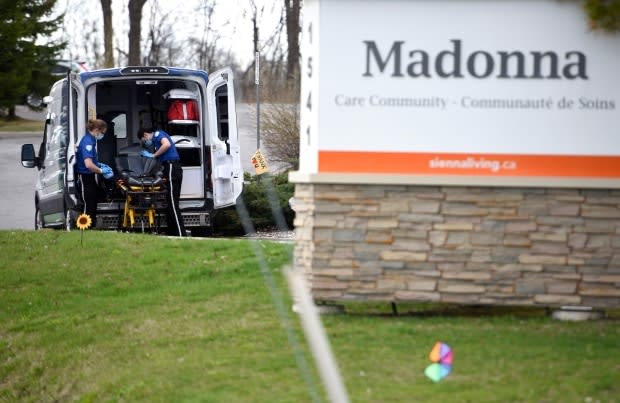Early lockdown key to avoiding deadly nursing home outbreaks, epidemiologist says

A top epidemiologist says long-term care homes across the province should learn from the experience of Kingston, Ont., as they prepare for a possible second wave of COVID-19.
The region covered by the Kingston, Frontenac, Lennox & Addington Public Health unit has largely avoided the tragedy that befell long-term care homes across the country, where outbreaks have ravaged both residents and staff, killing thousands.
Gerald Evans, a professor and chair of the infectious diseases division of the department of medicine at Queen's University, said the region's relative success of the region in controlling the spread of COVID-19 within the community and preventing outbreaks in long-term care homes offers lessons for the rest of the province.
In places where that visitation policy was delayed even for a period of a week or two, it resulted in the introduction of the virus. - Dr. Gerald Evans, Queen's University
Evans said locking down homes and restricting visitors before the virus spread in the community was a decisive factor.
"We restricted visitors [to long-term care homes] very, very early … before the virus had an opportunity to really begin to circulate widely," he said. "In places where that visitation policy was delayed even for a period of a week or two, it resulted in the introduction of the virus."
Evans said that when provincial orders to ban visitors at long-term care homes came down in mid- to late-March, Kingston had relatively few cases, and most were travel-related.
Precisely half of Ontario's 626 long-term care homes have experienced at least one outbreak of COVID-19 since March. Just over 1,800 residents and 7 staff members have died of respiratory illness, accounting for 70 per cent of all deaths from COVID-19 in the province.
Only one long-term care home in Kingston experienced an outbreak, and no staff or residents have died from COVID-19.

Preparing for a 2nd wave
Evans said the lesson for dealing with a possible resurgence of cases — which many experts say is inevitable — is that long-term care home administrators should be willing to lock down their homes and implement enhanced infection control measures before a single COVID-19 case is detected within the facility.
Instead, they should look for signs that cases are rising in the community around the home to determine if it's prudent to lock down.
"We have to have a very low threshold for re-instituting measures to protect long-term care homes," Evans said. "That's going to also require us to be doing some very good surveillance to look for the emergence of the second wave."
Currently, provincial regulations contain different sets of infection control procedures that long-term care homes must implement to protect their residents and staff members.
Don't wait for outbreak
At homes without an outbreak, staff must wear surgical masks, and there's daily screening for COVID-19 symptoms along with regular temperature checks and physical distancing measures. Each residents is allowed only one visitor per week.
Homes that are in an outbreak, which occurs as soon as a single staff member or resident tests positive for COVID-19, must implement heightened control measures including having staff wear face shields, gowns and gloves in addition to masks, confining healthy residents to their rooms and restricting visitors to those deemed essential.
Evans said waiting for an outbreak before jumping to the next stage of infection control measures is waiting too long. To get ahead of the virus's spread, Evans recommends using pubic health surveillance methods including antibody tests and monitoring emergency rooms and doctors' offices for people presenting with respiratory symptoms.
"Those kinds of downstream signals can give us the forewarning to make sure that long-term care facilities are re-instituting what are essentially lockdown-type procedures to prevent the infection from coming in," he said.

Advocate calls for flexibility
Laura Tamblyn Watts, CEO of the seniors' advocacy organization CanAge, agrees that homes should be proactive when planning for a possible resurgence of coronavirus cases. But she said they should also be more flexible when it comes to allowing visitors.
"We cannot lock people up for three months at a time and keep them from family and friends," Tamblyn Watts said. "We need to make sure that we have a more nuanced approach."
Tamblyn Watts said future long-term care lockdowns should allow family caregivers into homes to perform essential tasks.
"Family caregivers are part of the care team and they need to be integrated as such," she said. "If that means that they need to learn to don and doff personal protective equipment, that's fine."


